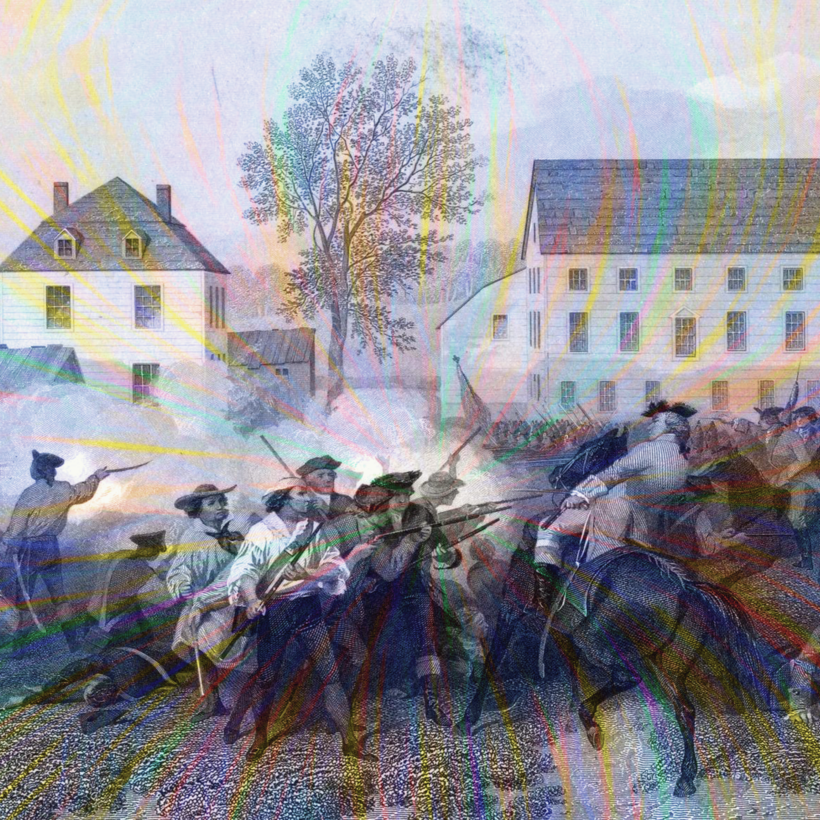It was sitting on a chair at the back of a long, narrow room. My wife, Kathleen, and I had just moved in. The house was built in 1742, on the banks of the Concord River, just downstream from Old North Bridge, where Massachusetts minutemen began the American Revolution in the spring of 1775. We had purchased the old farmhouse for its proximity not only to the Old North Bridge but also to the homes of my intellectual heroes, Ralph Waldo Emerson and Henry David Thoreau.
The house offered the chance to find historic tidbits, such as the one sitting on a chair at the back of that narrow room, tucked next to a fireplace. It was a stack of loosely bound xeroxed paper, and on the front was written: “The Story of the Bloods.”
It was a 200-page genealogy, originally privately published, of one of America’s wildest families. I knew the last name Blood from my research as a professor of 19th-century philosophy and American history. Benjamin Blood was the intellectual soulmate of William James, the founder of pragmatism and modern empirical psychology, and had introduced James to the mind-blowing experience of psychedelics. Perez Blood, an astronomer recluse, had befriended Thoreau. Perez sat in his woodshed at night, looked at the stars, and inspired the wild child of American letters. James Blood was the husband of activist and radical Victoria Woodhull, the first woman to run for the presidency.
This was a family that I already knew, or, at least, I thought I did.
Benjamin Blood was the intellectual soulmate of William James and introduced James to the mind-blowing experience of psychedelics.
As I researched the Blood’s family history, I realized my family was living in a Blood house. Not just any one but the birthplace of Thaddeus Blood, who, born in 1755, was the last living soldier of the Concord fight, the battle that set off the American Revolution. He both heard and inspired the idea of the “shot heard round the world.” These words are from Emerson’s poem “Concord Hymn,” but it was only after extensive interviews with Thaddeus that Emerson wrote them.
Thaddeus provided the last and fullest testament of the event that gave rise to the United States. According to him, it was an unknown “Uncle Blood” who rallied the troops above Old North Bridge against the redcoats.
Every year, on April 19, the anniversary of the battle, Emerson’s poem is read aloud in Concord and Lexington, the historical cradles of liberty. But cleanly told history is rarely ever true. Thaddeus’s interview with Emerson reflected an ambivalence surrounding American freedom. In Thaddeus’s words, “the truth will never be known” about what triggered the first shots of the revolution. From talks with Thaddeus, Emerson understood that freedom, which can border on wildness, is almost always dangerous. Liberty is necessarily terrifying—celebrated only in hindsight.
When James Blood and Victoria Woodhull met, they described their union as kismet, something like fate, or better, the wild meeting of chance and opportunity. Similarly, finding “The Story of the Bloods” felt like finding the book I always meant to read or write.
It is not an exaggeration to say that the Bloods were present at the creation of a nation, or, more pointedly, of the nation’s idea of itself—untamed, heedless, free. Theirs was a story that, just by accident, I could tell. American Bloods is a story of chances—some missed, many realized—and it is one that helped me see my nation, warts and all, through new eyes.
John Kaag is an American philosopher and a chair and professor of philosophy at the University of Massachusetts Lowell

